Tips from Animal Behaviourist Mark Vette to help your pets feel more at ease
Spring is in the air — and so is pet hair!
As the days warm up, cats and dogs naturally shed their thicker winter coats to stay comfortable in the new season. For many owners, this means more brushing, more baths, and more grooming.
But what if your pet finds grooming stressful? World renowned Animal Behaviourist Mark Vette shares expert tips to help nervous pets cope with spring shedding and grooming.
Shedding is normal, but the way we handle grooming can make all the difference — especially for nervous pets. With patience, the right tools, and some positive reinforcement, grooming can become a calm, even enjoyable experience.
Why some pets struggle with grooming
Not all dogs and cats take brushing in their stride. Typically this stems from a lack of early experience with being brushed or groomed. Some may feel uncomfortable with the sensation of a brush against their skin, others may have had a negative past experience that’s made them brush-shy, and many are simply sensitive to being handled in certain areas.
Common signs of grooming stress include:
- Pulling away or hiding at the sight of a brush
- Flattened ears, lip licking, or tense body language
- Growling, hissing, or snapping if you persist
Recognising these signs early is important — pushing through can make things worse and build long-term resistance.
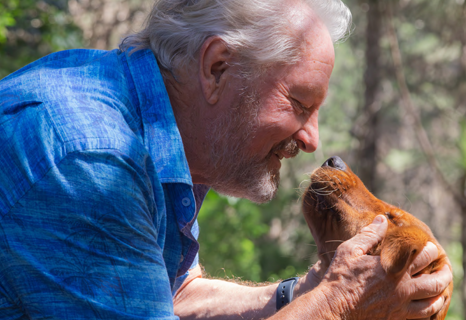
Mark Vette is a world-renowned Animal Behaviourist, Zoologist and Trainer. He brings together a unique combination of academic studies with 40 years of applied clinical animal behaviour consulting and treatment. Mark is a member of the International Association of Animal Behaviour Consultants. This article was written by Mark and the views expressed are his own.
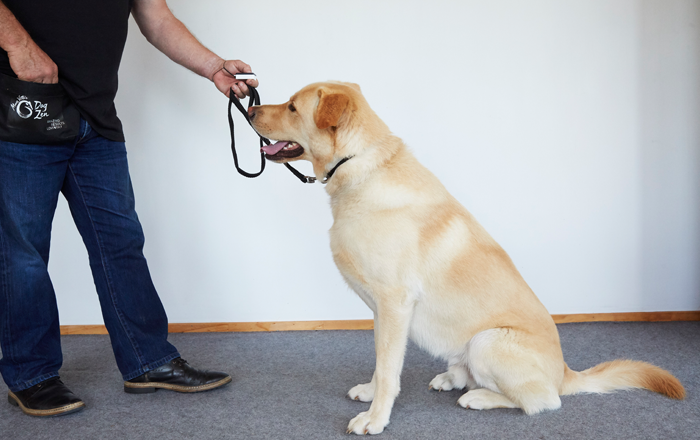
Introducing a marker
Marker training is a powerful way to change how your pet feels about grooming, it’s particularly useful in the treatment of fear-based issues as it can help switch your pet from a fearful state, into the calm and relaxed Learning State needed to begin to accept grooming. It uses positive reinforcement: mark the behaviour you want, then reward with a treat.
I favour a small hand-held tool called a clicker, which you can use to make a distinctive click noise to mark the behaviour you want, however you can also just use a verbal “yes” in place of the click (just keep your tone of voice calm, positive and consistent).
To introduce marker training, start by tossing your pet’s favourite treats on the ground. Click or say “yes” the instant your pet eats them. This helps pair the marker word up with the expectation of a treat.
From there, use the marker to practise some basic commands that your pet already knows e.g. ask for a Sit - click or say “yes” the instant your dog’s bottom hits the ground - follow up with a treat.
Creating a calm grooming environment
Before you even pick up the brush:
- Choose a quiet, familiar space with minimal distractions
- Keep grooming sessions short — just a few minutes at first
- Use treats your pet LOVES, and stay relaxed yourself (your energy matters)
- At first, practise when your pet is nice and hungry so they’re more likely to be distracted by your treats
- Clip dogs up or have them on a lead, have cats in a contained space so they can’t escape
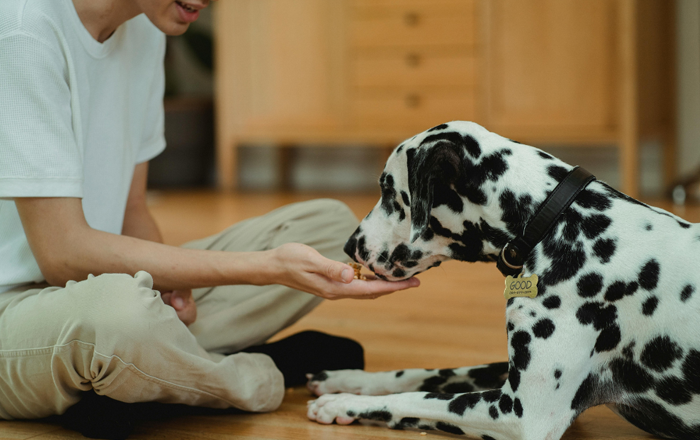
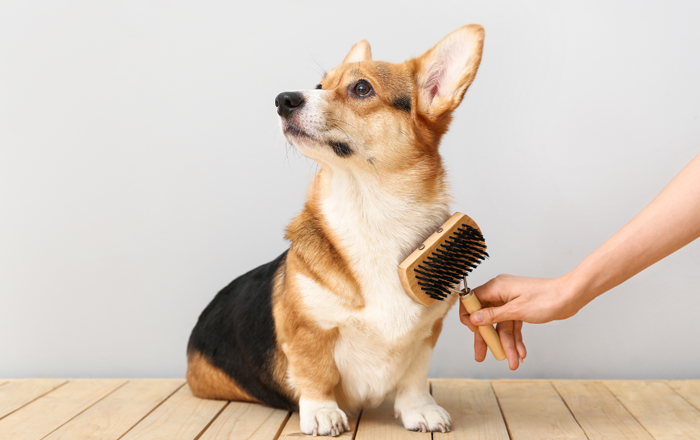
Water fun for hot days
Now we can start to use marker training to desensitise a pet to being groomed!
Here’s how to get started:
- Introduce the brush
-
- Place the brush on the floor. When your pet looks at it calmly or sniffs it, click and treat.
- Repeat until the brush is no longer seen as scary.
- Place treats right beside and even on top of the brush for your pet to take.
- Build comfort with touch
-
- Use the back of the brush to begin with (not the bristled side).
- Touch the back of the brush gently to your pet’s shoulder or back (no brushing yet). Click and treat if they stay relaxed.
- Then move the back of the brush along your pet’s back gently. Click and treat.
- Keep sessions very short — end before your pet becomes worried.
- Begin light brushing
-
- Now introduce the bristled side.
- Start with just one or two strokes in an easy area (like the back). Click and treat.
- Gradually increase duration over several sessions, always pairing brushing with rewards.
- Expand to sensitive areas
-
- Slowly work towards more challenging spots (belly, tail, paws) once your pet is fully comfortable with easier areas.
- Always progress at their pace: if your pet is taking treats, it’s a sign they’re coping. If they stop taking treats, go back a step. You do need to push your pet to the edge of their comfort level to help them progress, but don’t go too far - we want to keep things positive!
- Gradually become more vigorous
-
- As your pet shows they are coping, you can gradually build up to a more vigorous brush (if necessary for their coat).
Consistency is key. A few minutes daily will build confidence faster than occasional long sessions.
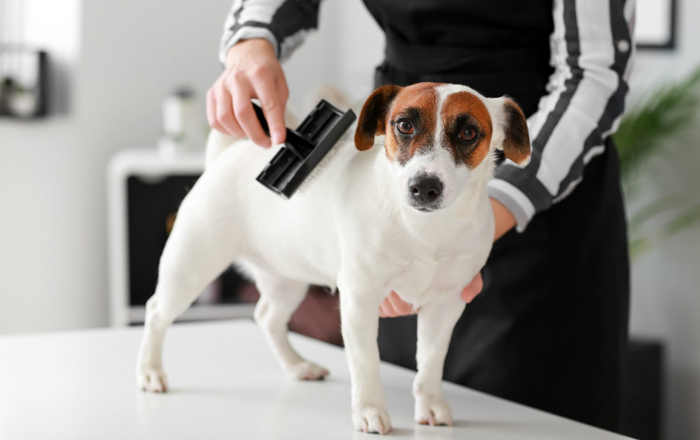
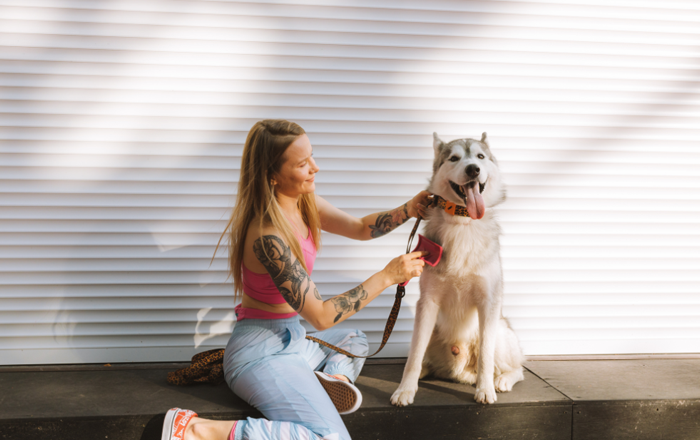
Extra tips for success
- Use brushes suited to your pet’s coat type — a soft brush for sensitive cats, or a de-shedding tool for double-coated dogs.
- Practise after a play session, when your pet is relaxed. Also finish with a short play session to release the tension built up by pushing your pet a little out of their comfort zone.
- Stop if your pet shows signs of stress - ending on a positive note is better than pushing through. However a bit of mild discomfort is okay: use the treat test; if they are taking treats, they are coping; if not, ease off.
- If your pet’s coat is badly matted or they become aggressive during grooming, seek help from a groomer or animal behaviourist.
- It can be helpful for one person to do the click and treating, while the other person does the gentle grooming.
- Or you can try smearing peanut butter on a glass door or wall of the bath, or using a loaded lick-mat to distract your pet while you introduce grooming.
- Homeopathic products like Rescue Remedy may help your pet calm down for the experience.
- For more serious phobias of grooming, anti-anxiety medication may be helpful - chat to your vet about the options.
Remember - in the early sessions, it’s MUCH more important to help your pet feel at ease with the grooming experience than to actually achieve a complete groom. Take it easy and spread the progress over a number of sessions.
The takeaway
Spring shedding doesn’t have to mean a battle with your pet. With patience, the right approach, and the help of marker training, you can turn grooming into a calm, rewarding routine. Not only will your pet’s coat shine — your bond will grow stronger too.
Always consult your vet on the best way to look after your pet. And to avoid unexpected costs, make sure your pet is insured.
Have a look at our pet insurance plans to choose the right insurance plan for your pet.
